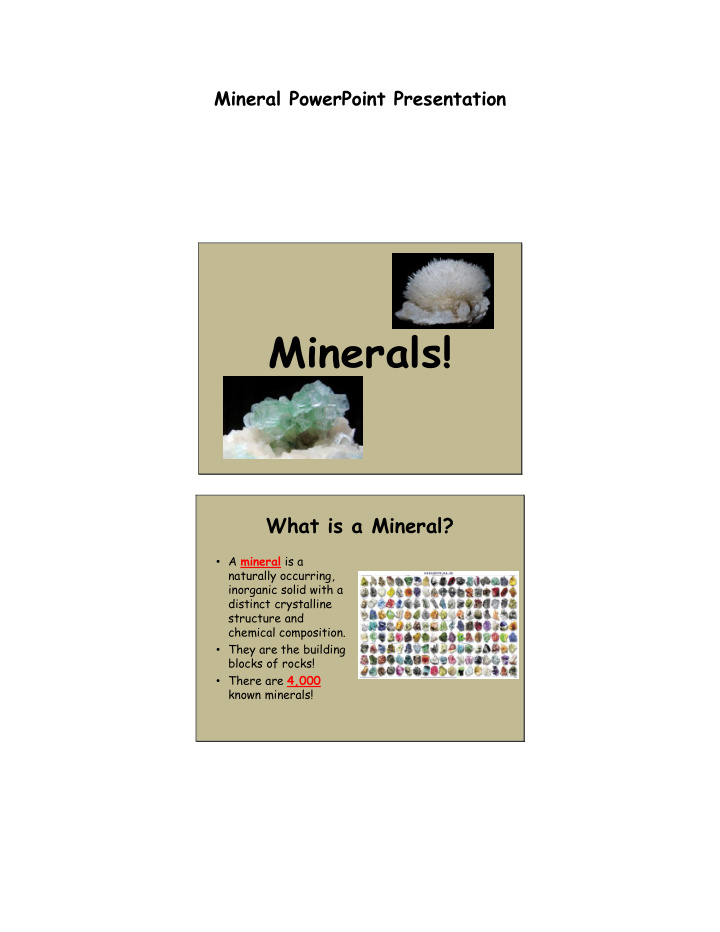



Mineral PowerPoint Presentation Minerals! What is a Mineral? • A mineral is a naturally occurring, inorganic solid with a distinct crystalline structure and chemical composition. • They are the building blocks of rocks! • There are 4,000 known minerals!
5 Characteristics 1. Naturally occurring 2. Solid substance 3. Orderly crystalline structure 4. Definite chemical composition 5. Inorganic(was never alive) Naturally Occurring • A mineral forms by natural geologic processes meaning processes that occur on or inside Earth with no input from humans. • Synthetic gem, such as synthetic diamonds and rubies, are not considered minerals. Solid Substance • Minerals are solids within the temperature ranges that are normal for Earth’s surface.
Orderly Crystalline Structure • Minerals are crystalline substances which means that their atoms are arranged in a pattern that is repeated over and over again. Crystalline Structure?
How Minerals Form 4 major processes: 1. Crystallization from magma 2. Precipitation 3. Changes in pressure and temperature 4. Formation from hydrothermal solutions Properties of Minerals • Color • Streak • Luster • Hardness • Breakage Color • Color is unique to some minerals. However, this property is often not useful in identifying many minerals. • Small amounts of different elements can give the same mineral different colors.
Streak • Streak is the color of a mineral in its powered form. • Streak is obtained by rubbing a mineral across a streak plate , a piece of unglazed porcelain. Luster • Luster is used to describe how light is reflected from the surface of a mineral. • Luster can be described as either metallic or nonmetallic . • Minerals with a metallic always shine like metal . • Minerals with a nonmetallic luster can be described as glassy, pearly, silky, and earthy. Metallic or Nonmetallic?
Hardness • Hardness is a measure of the resistance of a mineral to being scratched . You can find this property by rubbing the mineral against another mineral of known hardness. Mohs Hardness Scale The Mohs Hardness Scale is a standard hardness scale used by geologists. It consists of 10 minerals arranged from 10 (hardest) to 1 (softest). Breakage There are two ways minerals break. 1. Cleavage is the tendency of a mineral to cleave, or break along smooth flat surfaces. 2. Fracture is the uneven breakage of a mineral. Minerals that do not show cleavage when broken are said to fracture.
Cleavage or Fracture? Uses of Minerals • Gems – a valuable mineral highly prized because it is rare and beautiful • Ores – a mineral that contains a useful substance that can be mined at a profit. – Aluminum – Iron
Recommend
More recommend